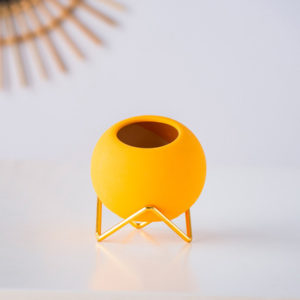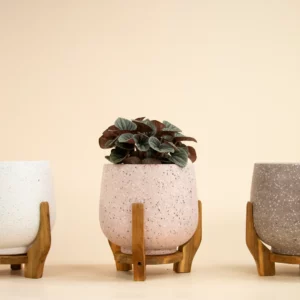
#Thejunglecollective!
What’s wrong with your Indoor plant: Deciphering the Woes of Your Wilting Houseplant
Does your once vibrant houseplant now appear droopy, discolored, or plagued by unwelcome pests? Fear not, fellow plant parent! This guide equips you with the knowledge to diagnose common indoor plant ailments and revive your leafy companion back to health.
The Art of Plant Observation: A Crucial First Step
The first step to solving your plant’s problems is becoming a keen observer. Regularly inspect your plants, paying close attention to several key aspects:
Overall Appearance: Is your plant wilting, dropping leaves, or exhibiting stunted growth?
Leaves: Are they discolored, with yellowing, browning, or curling? Are there any visible signs of pests like insects or webbing?
Stems: Move on to the stems and check for softness, mushiness, or discoloration.
Soil: Finally, inspect the foundation of your plant’s health: Is the soil dry, compacted, or soggy?
Ailing Leaves: A Code to Crack
Yellowing leaves can be caused by several factors, including underwatering, overwatering, nutrient deficiency, or insufficient light.
Solution! Identify the underlying cause. Depending on the diagnosis, adjust your watering habits, fertilization routine, or relocate the plant to a brighter location.
Browning leaves, on the other hand, can be caused by underwatering, sunburn, or exposure to cold drafts.
Solution! Adjust watering and check for proper light and temperature. Prune off severely damaged leaves.
Crispy leaves are a classic sign of low humidity, underwatering, or exposure to excessive heat.
Solution! In order to increase humidity levels, use a humidifier or pebble tray. Adjust watering and relocate the plant away from heat sources.
Droopy leaves can be caused by a variety of issues, including underwatering, overwatering, root rot, or insufficient light.
Solution! Check soil moisture and adjust watering accordingly. If root rot is suspected, repot the plant in fresh, well-draining soil. Ensure adequate light.
Stem SOS: What’s wrong with your Indoor plant?!
Soft or Mushy Stems: This is a classic symptom of overwatering and subsequent root rot.
Solution! Remove the plant from its pot and inspect the roots. If mushy and brown, the plant might be beyond saving. If some healthy roots remain, repot in fresh soil and adjust your watering routine.
Brown or Discolored Stems: This can be caused by underwatering, sunburn, or a fungal infection.
Solution! Adjust watering and relocate the plant away from direct sunlight. For fungal infections, isolate the plant and treat with a fungicide.
Soil Scrutiny: Uncovering Issues Beneath the Surface
Dry and Compacted Soil: This can lead to underwatering, even if you’re watering regularly.
Solution! Water thoroughly until water runs out the drainage holes. Consider repotting in a well-draining potting mix.
Soggy Soil: This indicates overwatering and can lead to root rot.
Solution! Allow the top inch of soil to dry completely between waterings. Ensure the pot has adequate drainage holes. Consider repotting in fresh soil if root rot is suspected.
Pesty Problems: Identifying and Eradicating Unwanted Guests
Aphids are tiny, soft-bodied insects that suck sap from leaves, causing them to curl and yellow.
Solution: Treat the plant with insecticidal soap or neem oil spray.
Watch out for mealybugs, cottony white insects that cluster on stems and leaves, feeding on plant sap.
Solution! Treat with insecticidal soap or neem oil spray. For persistent infestations, consider using rubbing alcohol on a cotton swab to remove individual mealybugs.
Scale appear as bumps on leaves and stems, sucking sap and weakening the plant.
Solution! Treat with horticultural oil or insecticidal soap spray.
Remember: Prevention is key! Regularly inspect your plants, quarantine new additions, and maintain good growing conditions to deter pests.
When in Doubt, Seek Help!
If you’re struggling to diagnose your plant’s woes, don’t hesitate to consult your local nursery or gardening expert. Provide them with detailed information about your plant care routine, the symptoms, and any pictures you may have. With a little investigation and the right care, you can restore your beloved houseplant to its former glory.
By understanding the language of your plants and recognizing the signs of distress, you can become a plant whisperer and cultivate a thriving indoor jungle. So, grab your magnifying glass, become a plant detective, and watch your leafy companions flourish for years to come!
















